QNIX QX2710 LED DPmulti True10 Review
by Chris Heinonen on April 11, 2014 6:00 AM ESTDisplay Lag, Power Use and Color Gamut
Measured using a Leo Bodnar lag tester over HDMI, the QNIX has 33.3ms of input lag. This is likely going to be too high for most people that want to seriously game on the display. There is no game mode or anything else to reduce this input lag, though as always using a native resolution might improve the situation. This might only be by 2-3ms and so it might not make a huge difference to people.
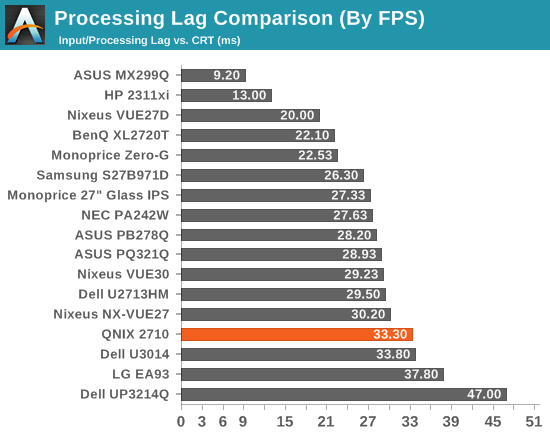
The QNIX color gamut encompasses 69.1% of the AdobeRGB gamut. This is slightly short of the sRGB gamut (which is 71% of AdobeRGB). The shortcomings are going to be in the Cyan and Blue area of the gamut as there is over-saturation in Reds and Greens. With standard white LED backlights this is expected.
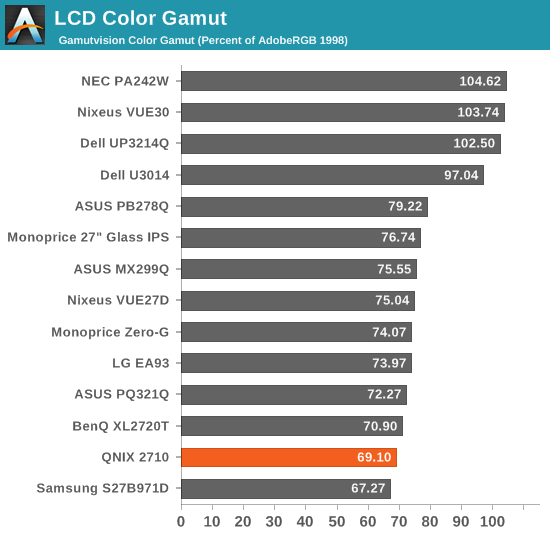
Power use is average for a 27” QHD display. The maximum light output power usage is very close to everyone else, but the minimum power usage is a bit worse. Since it is only a couple of watts difference here, it isn’t a large enough difference to even worry about. The QNIX is neither more or less efficient than other LED backlit displays on the market.
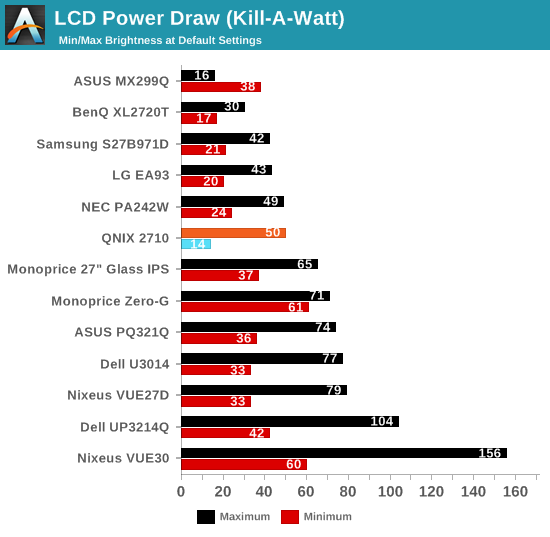
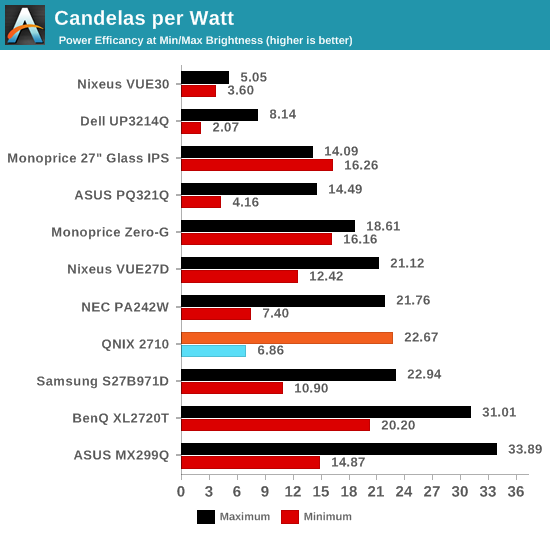


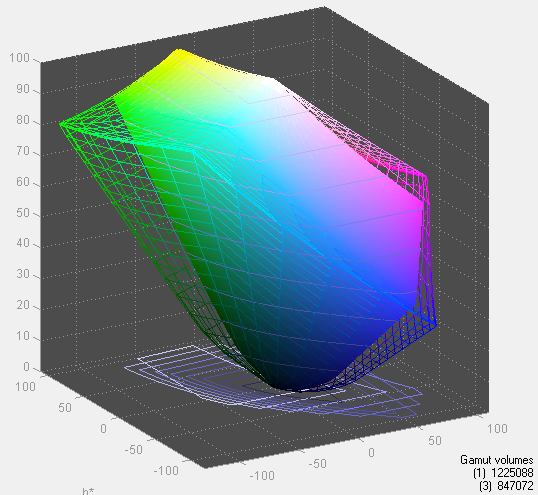








85 Comments
View All Comments
lazarpandar - Friday, April 11, 2014 - link
HD refers to 1280x720 so it logically follows that QHD refers to 2560x1440. Look at some laptop spec sheets, they all claim HD for 1366x768 and Full HD for 1920x1080. This review is not confusing in any way, it just sounds like you guys weren't very familiar with the terminology (which is admittedly kind of confusing).LordOfTheBoired - Sunday, April 13, 2014 - link
The terminology isn't confusing. It's stupid, and it always has been. The *GA line isn't any better(it's actually far worse, for various reasons).Specify resolution with a perfectly good X by Y spec, or don't bother at all. Leave the cute nicknames on the mass-marketing bullet lists where they belong.
WithoutWeakness - Friday, April 11, 2014 - link
HD = 1280x720FullHD (FHD) = 1920x1080
QuadHD (QHD) = 2560x1440
UltraHD (UHD, 4K) = 3840x2160
The confusion has come in when people have begin referring to 1920x1080 as "HD". By that definition, "QuadHD" then implies 4x1080p or 4K, which is incorrect. QuadHD has always been 2560x1440. So the confusion doesn't come from how the article is written - it comes from the incorrect definition of "HD" that has perpetuated over the last few years as new confusing acronyms are coined for higher-resolution displays.
phoenix_rizzen - Friday, April 11, 2014 - link
The confusion comes in when people refer to the vertical resolution for years and years (480p, 720p, 1080p) and then switch to using the horizontal resolution (2K, 4K), especially considering those monikers are off by several hunder to a thousand pixels.If everyone just keeps using the vertical resolution, then nobody gets confused.
480p
720p
1080p
1440p
2160p
Nice, neat, simple. Changing definitions in the middle is what's causing all the issues.
hennwei - Friday, April 11, 2014 - link
4K sounds way cooler though. and when it sounds cooler, it sells more. kaching!skifiddle - Sunday, April 13, 2014 - link
It is Cha-ching as in where it is made.Treckin - Thursday, April 24, 2014 - link
definitely cha ching as in the noise an antique cash register made...Laststop311 - Friday, April 11, 2014 - link
4k ultrade hd is sometimes referred to as QFHD quad full hdcoburn_c - Friday, April 11, 2014 - link
Panel grading refers to manufacturing defects, these ebay panels are usually B grade on a scale of A+,A,A-,B,C. Also WQHD is 1440p as the keywords, article, charts, and text state...blackoctagon - Thursday, May 1, 2014 - link
They're not only sold on eBay and the panel grade is actually A-